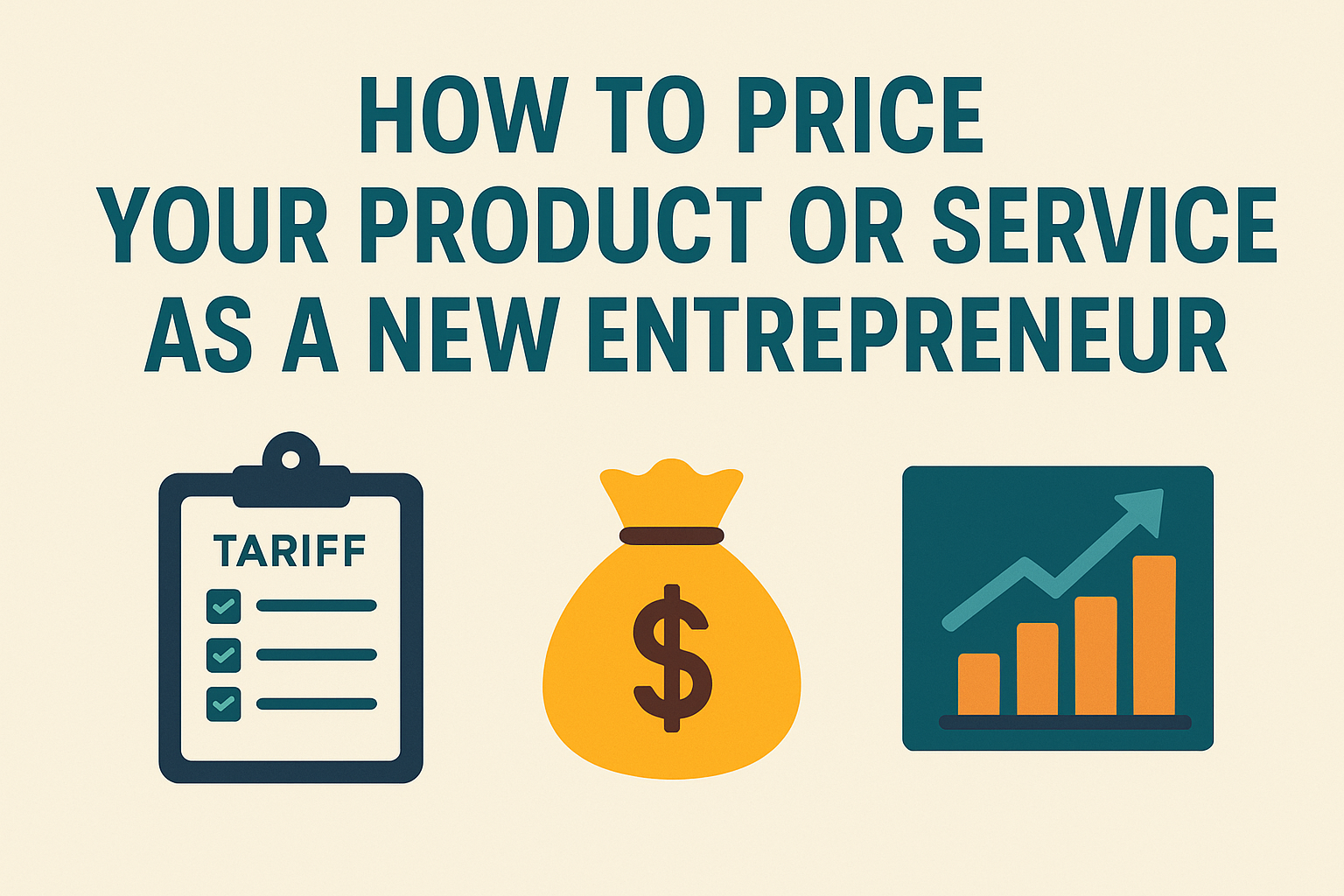Pricing is one of the most critical — and often confusing — decisions for new business owners. Price too high and you may scare off potential customers; price too low and you may undercut your value or even lose money. The right price strikes a balance between profitability, perceived value, and market demand.
This guide will walk you through the process of setting a price that reflects the true value of what you offer while supporting your business growth.
Why Pricing Matters So Much
Your pricing affects every part of your business:
- Revenue: It directly impacts your income.
- Positioning: It influences how people perceive your brand.
- Growth: It determines how much you can reinvest in marketing, hiring, and improving your offer.
In the early stages, many entrepreneurs guess or mimic competitors. But with a strategic pricing approach, you can build a sustainable and scalable business.
Step 1: Understand Your Costs
You can’t price your product or service properly without knowing how much it costs to deliver.
Two types of costs:
- Fixed Costs: Rent, software subscriptions, utilities — these don’t change based on how much you sell.
- Variable Costs: Materials, packaging, shipping, payment fees — these vary with each unit sold.
Tip: Use this formula to calculate the minimum viable price:
Minimum Price = Fixed Costs + Variable Costs + Profit Margin
Step 2: Know the Market
Look at what your competitors are charging — not to copy them, but to understand what’s considered “normal” and how you compare.
Research competitors:
- What do they charge?
- What’s included at that price?
- How do they position their product — budget, premium, exclusive?
Then ask yourself: Do I offer more? Less? Something unique? Your pricing should reflect that.
Step 3: Know Your Value
People don’t just buy products or services — they buy results, experiences, and benefits.
Questions to define your value:
- What problem do you solve?
- What result do customers get from using your product/service?
- How much time, energy, or money do you save them?
- What makes your offer different or better?
If you deliver high value, don’t be afraid to price accordingly — especially if you’re helping customers improve their life or business.
Step 4: Choose a Pricing Strategy
Here are a few popular pricing models for small businesses and freelancers:
1. Cost-Plus Pricing
Add a fixed percentage markup to your costs. Simple, but doesn’t consider customer value.
Example: You make a candle for $5 and add a 100% markup → sell for $10.
2. Value-Based Pricing
Price based on the perceived value to the customer, not just your cost.
Example: A coaching session that saves someone hours of time could be worth $200, even if it costs you $0 to deliver.
3. Competitive Pricing
Set your price based on what competitors charge, but make sure your offer is clearly differentiated.
Example: If competitors charge $50 for a website audit, you could offer yours at $60 with added bonuses.
4. Tiered Pricing
Offer multiple pricing levels to serve different budgets and increase average order value.
Example:
- Basic: $29
- Pro: $59
- Premium: $99
5. Introductory Pricing
Start with a lower price to attract early users, then raise prices as you gain testimonials and experience.
Step 5: Factor in Time and Labor
If you provide a service (freelancing, consulting, design), you must account for the time you spend.
Don’t forget to include:
- Prep time
- Communication with clients
- Revisions
- Admin tasks (invoicing, emails)
If you want to earn $3,000/month working 20 hours/week, your hourly rate needs to be $37.50 minimum (not including taxes or overhead).
Step 6: Add a Profit Margin
Profit isn’t greed — it’s survival. You need profit to reinvest, pay yourself, and grow your business.
A healthy margin varies by industry, but many aim for:
- Product-based businesses: 50–70% markup
- Service-based businesses: 30–50% margin after taxes and costs
Example:
If your costs are $10, and you sell for $25, your margin is 60%.
Step 7: Test and Adjust
Pricing is not set in stone. Start with your best estimate, then gather feedback and adjust.
Track:
- Conversion rates
- Customer reactions
- Average revenue per sale
- Profit after expenses
If customers constantly ask for discounts or seem confused, it might be time to adjust either your pricing or how you communicate value.
Step 8: Communicate the Value, Not the Price
Never let your product’s value be defined by a number alone. Use your website, social media, and sales copy to highlight benefits, not just features.
Instead of:
“30-minute coaching call — $50”
Say:
“30-minute session to help you break through your productivity blocks and plan your next steps — $50”
People don’t buy time or things. They buy transformation, speed, convenience, relief, joy.
Step 9: Use Bonuses and Bundles
Rather than discounting, add extra value.
Examples:
- Bundle products together at a slightly lower price
- Offer a free checklist, tutorial, or consultation with purchase
- Include fast delivery, VIP support, or future discounts
This increases perceived value without cutting into your profit margin.
Step 10: Raise Prices Confidently Over Time
As your business grows and you gain experience, don’t be afraid to raise prices.
When to raise your rates:
- You’re fully booked or overwhelmed
- Clients are raving about your results
- You’ve improved your offer or added features
- Your competitors charge significantly more
Communicate price increases clearly and give existing customers a chance to lock in old pricing if possible.
Final Thoughts: Your Price Is a Message
Pricing is more than math — it’s positioning. It tells your customers how to perceive you and what kind of experience to expect.
Set your prices with intention, strategy, and confidence — and be ready to back them up with excellent
